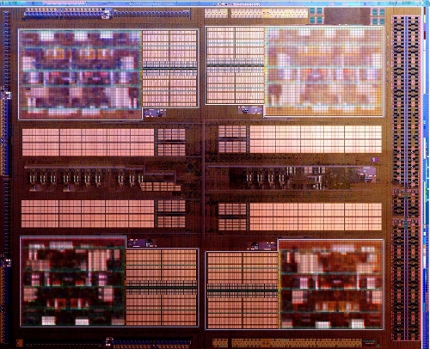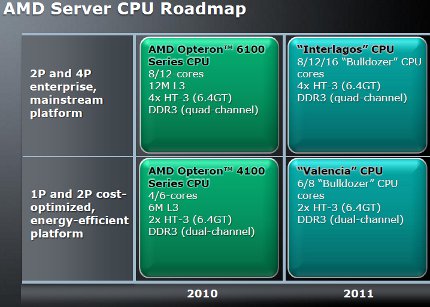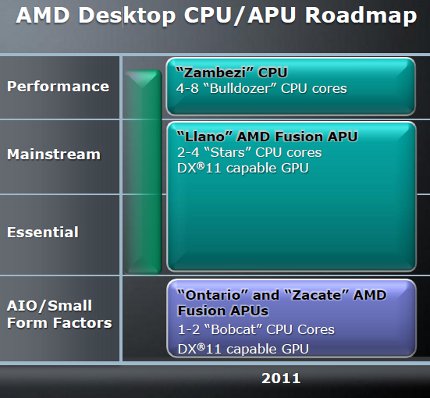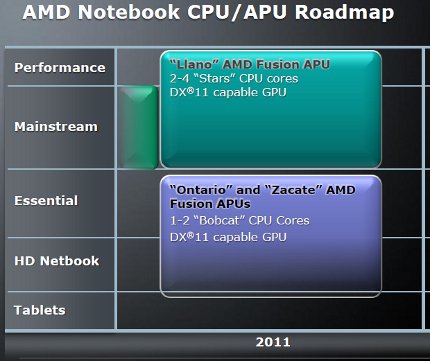As predicted, AMD shed some light on its upcoming Fusion processors at a Financial Analyst Day yesterday. With Bobcat taken care of at a journalist's event recently, the focus was on the company's play at the mainstream, enthusiast and server markets, and that meant Bulldozer.
We already know a fair bit about the nuts and bolts behind the Bulldozer architecture, but the chip-maker gave a few more details about the products that we'll actually be able to get our hands on. At the ultra-high end of the server market we'll see the Interlagos CPUs, featuring eight, 12 or 16 Bulldozer cores and a massive quad-channel memory-controller that will be available in the third quarter of next year.

These will feature 2MB L2 cache per pair of cores - for a maximum of 16MB on a 16-core CPU - 8MB L3 cache - or 16Mb on the 16-core model - and a Turbo CORE that can increase clock-speeds by up to 500MHz when all cores are under full load. There are also efficiency improvements, with a new C6 idle power-state shutting down entire modules and a die shrink that will fit eight cores in a smaller package than the current 45nm six-core chips.
Eventually, these will make way for the Terramar chips in 2012, which will incorporate anything up to 20 'next-generation' Bulldozer cores using the same 32nm manufacturing process.
The more mainstream server market will see the introduction of the six and eight core Valencia processors in Q3 2011, followed by the ten core Sepang CPUs in 2012. These will be specifically targeted at cloud-servers and usage scenarios requiring high energy-efficiency.
Server chips are all good and well, but AMD also revealed how it'll be using the Bulldozer architecture in desktop CPUs. The first products for the performance market will belong to the Zambezi-family and make use of between four and eight cores. Since they're based on the same die, you can expect the same arrangement of cache as the server chips and the same 500MHz Turbo CORE across all cores.
These will launch in Q2 2011 and be followed by the octacore Komodo chips in 2012. As well as being built around the next-generation Bulldozer core, Komodo will be the first enthusiast parts to integrate a GPU onto the die. At around this time, quad-core and the first dual-core Bulldozer CPUs will also debut for the mainstream markets with the codename Trinity as a replacement for the Llano desktops and notebooks APUs.
It's in 2012 that AMD also plans to launch its first processors manufactured on a 28nm process. Based on a refined version of the Bobcat architecture, the 1-4 core Krishna and Wichita APUs will replace the 40nm Ontario and Zacate chips for low-power desktops, entry-level notebooks, netbooks and tablets.
















